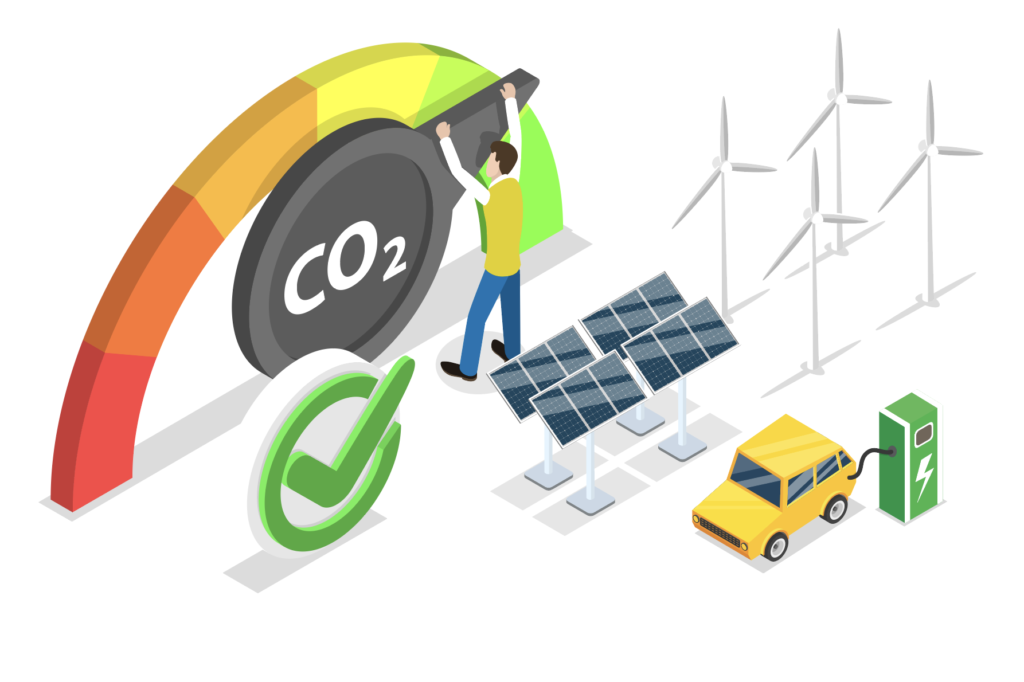Revolutionise Your Carbon Management Strategy with These Software Insights

Organisations are becoming more reliant on software to manage their carbon measurement and reduction efforts. Carbon assessment is a complex process that requires a large volume of data. With the potential of software to help in efficient, consistent, and accurate carbon calculation, it is increasingly becoming a popular solution.
The following are factors that organisations should consider when selecting a software solution for their carbon measurement and reduction efforts:
- Centralising Data Managing: Carbon data from multiple sources can be overwhelming, so centralising all data in one space is an ideal solution. This process can replace the hassle of using numerous spreadsheets and extensive data-gathering exercises. Software solutions update data automatically, allowing everyone to use the latest data set.
- Reliability of Emissions Calculations: Software solutions should be built around the principles of Greenhouse Gas Protocol standards and associated guidance. Using ISO14067, the global standard, to apply these standards helps to improve robustness and reduce the risk of errors. Other environmental standards in the family of 14001 will not suffice for data.
- Adaptable and Easy to Update: For many businesses, managing carbon footprints may be a concern as they have numerous SKUs, which can change over the year. To reflect changes in the quality of carbon footprint data or changes to a company’s structure (mergers, acquisitions, or divestments), it is crucial to update the carbon footprint calculation. Robust software solutions allow you to update emissions sources, data types, and organisational structures while retaining the historical view of emissions.
- Greater Audibility of Emissions Calculations: Implementing software solutions can offer greater traceability than previous Excel-based solutions. Thanks to software functionality such as version control, security, access levels, data transparency, trend analysis, and error flagging, it becomes much easier to trace changes in data and review justifications for those changes. This functionality makes it easier for auditors and management to review data.
- Sharing Data Software: Has the potential to enable effortless data sharing across the value chain, leading to more accurate calculations. But as each business may require their data reported their way, bespoke templates from a common data warehouse will enable transparency.
- Straightforward Reporting and Compliance: Software providers should enable automation of the calculations, utilising a standard process and generating reports in line with multiple frameworks such as CDP, SECR, CSRD, and TCFD. This function allows management to focus on strategic decisions.
- Footprinting Software: Identifying Potential Providers In a rapidly evolving market, it may take time to assess whether current software solutions address a company’s needs. Critical is the standard the provider is working to, and ideally, they should be verified to ISO14067.
- Organisational Engagement: To successfully implement new software within operations, staff must actively engage with it. Before introducing new software, check whether the necessary resources to use the tool correlate with the team’s availability and time constraints. It is also important to align data entry methods with existing data collection processes to avoid burdening teams.
- Consistency in Data: To implement software successfully, providers must have a good level of understanding of a company’s current emission data sources and types. While most software can cater to various data types, the processing required to manage different data formats and sources can be burdensome and introduce the risk of sources not being maintained or calculation errors, driving additional costs.
- Complex Calculations: Existing software solutions can meet requirements for energy-based Scope 1 and 2 emissions. However, more intricate calculations of Scope 3 emissions, such as from source to a factory gate or waste emissions, require additional calculations to ensure accuracy.
- Disaggregating Your Greenhouse Gas Emissions: Disaggregating emissions into individual greenhouse gases (GHG) is essential for assessing Forest, Land and Agriculture (FLAG)-related emissions in land-intensive activities such as food and agriculture-based organisations.
Understand your requirements both now and in the coming years
To ensure that the software you choose meets both your current and future needs, it’s important to carefully consider your requirements. This is a significant undertaking, requiring significant resources and financial investment.
Examining a vendor’s product roadmap can help you identify any potential limitations and ensure that the software aligns with your priorities. While software may not be a perfect solution for all of your needs, it can certainly improve existing methods and contribute to urgent climate action.
To choose the right provider, it’s important to consider your organisation’s specific needs and determine when and how to supplement existing tools to achieve the greatest benefits while maintaining accuracy in areas where gaps exist in the current market offerings.
How can we assist you in this process?
Recent Posts
- European Parliament Votes to Postpone Corporate Due Diligence and Sustainability Reporting Requirements
- Financial Markets vs. Sustainability Markets in Packaging
- How prepared are you for the Packaging and Packaging Waste Regulation (PPWR)?
- Green Claims Regulation: A Global Perspective on Environmental Marketing
- The Environmental and commercial Impact of Packaging (Facts, Figures and a solution)
Recent Comments